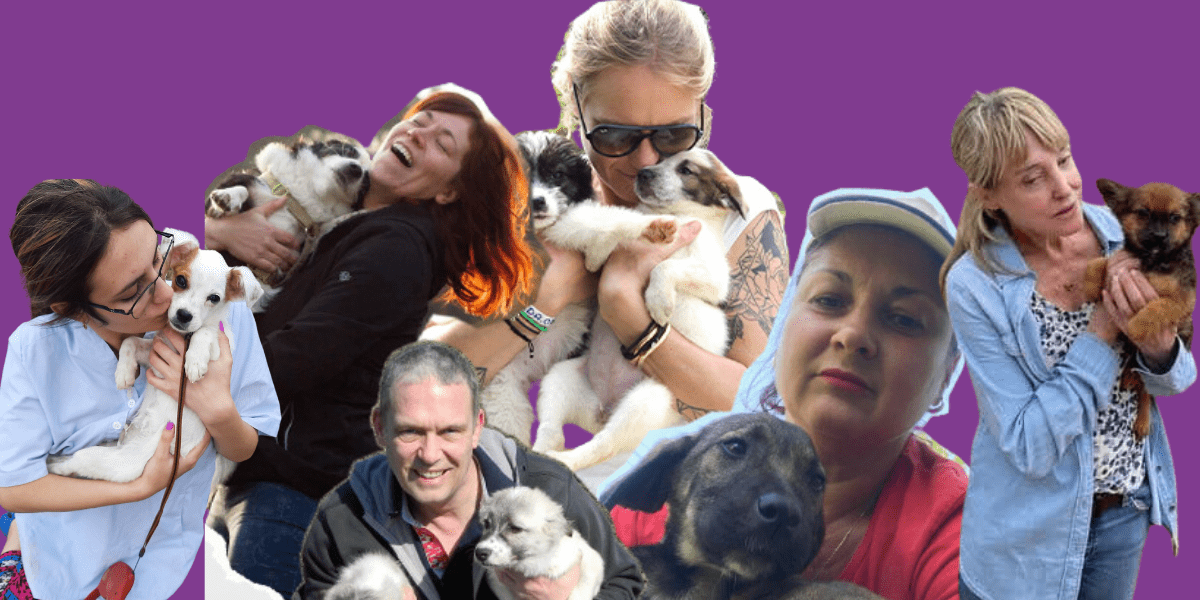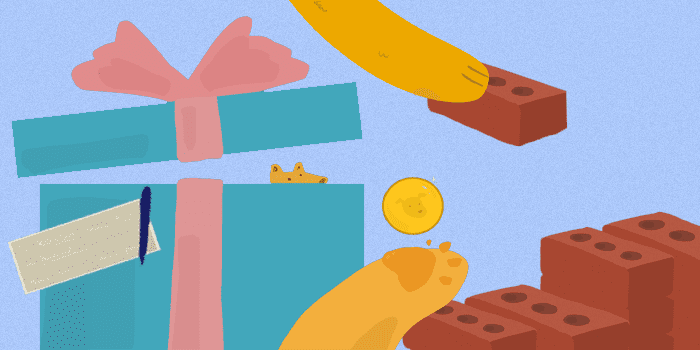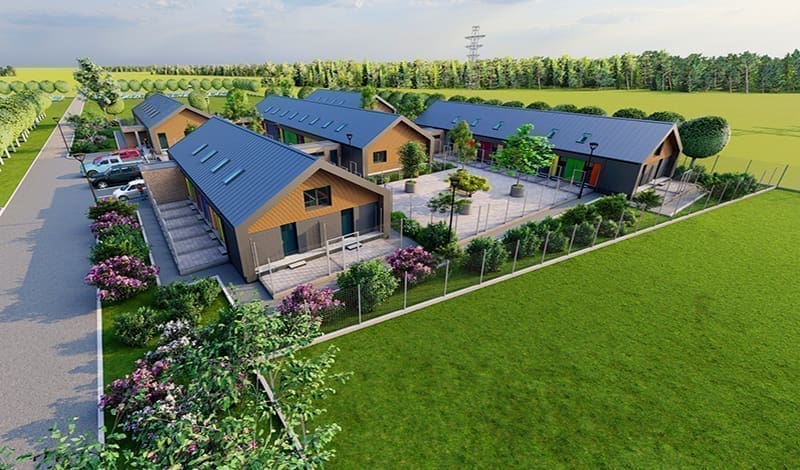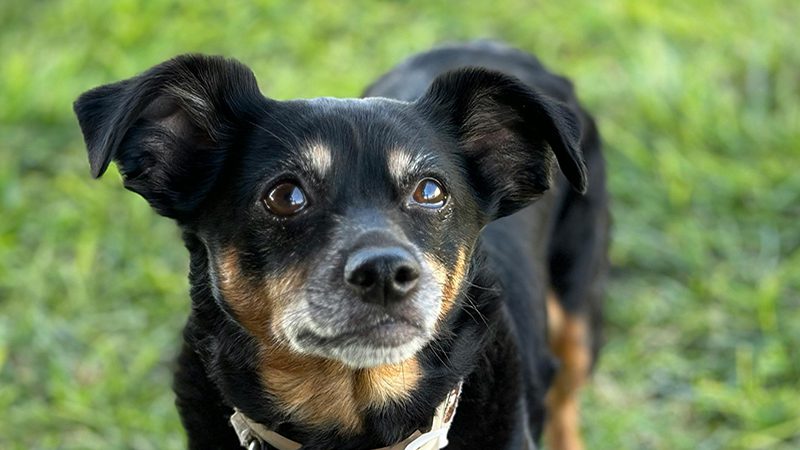How do you train an older dog not to bite?

As much as we love our dogs and as much as we understand their instincts, biting remains objectively wrong. This is primarily because of its obvious harmful effects and the legal implications for the owners of dogs that bite. Sometimes, it might depend on the context in which the bite occurred and the severity or whether it was provoked. In other cases, the law in your state or county dictates immediate punishment: the owner may be fined, the dog may be taken away, and it might even be euthanized.
There are many reasons to avoid this situation, whether the danger of snapping at strangers, other dogs when you are out for a walk, house guests, or, worse, family members and other pets living in the house.
But what do you do when the dog is old and teaching it to behave differently is challenging? Or if the biting results from old age and a change of character. Let’s address both issues. Let’s look at these scenarios.
Training an old dog to stop biting
Older dogs are more challenging to place for adoption. They are less active in the household dynamic and usually have additional medical needs the new family must cover. If you add to this a habit of biting, it makes it almost impossible to find a home for such a dog, not to mention the problem of keeping it with the others in a shelter.
As dog rescuers, we encounter dogs with many behaviors. Depending on what the animals have been through and their traumatic experiences with humans and other dogs, we usually assume that they could be scared and prone to biting us when we first meet them. This is not a generalization, but a way to be cautious when approaching a dog.
Some old dogs have lived on the streets for so long that they only survived by being the bigger threat. So, how do we handle such a dog when we want to place it in the same space with smaller, more docile dogs?
You probably have the old saying, “You can’t teach an old dog new tricks,” in mind. To some extent, this is true in the sense that you need to be more mindful of the senior dog’s needs and have a customized approach.
When you adopt an old dog with a biting habit
We will start by saying that although we believe every dog deserves a suitable home, we know that not all homes are good matches for all dogs. An old dog with a biting habit cannot be in a changing environment with a complex family dynamic, small children, and other pets.
In the chaos and agitation of daily life, it may be challenging for the dog to find its own place and some peace, and every loud situation might trigger it.
The people who can take on such a challenge can offer a calm environment with little to no agitation and schedule variation. This is a good starting point for a dog who has learned that a strong bite can solve problems.
How to deal with such a dog
Handling triggering situations is the main way to avoid problems.
The truly challenging aspect of adopting a dog with a biting problem is that it can come unexpectedly, as you may not know what the dog may find threatening. The general signs of a dog being about to bite are a changed body posture—a rigid back, and a tail tucked between the legs, the head turned away, and the constant licking of lips. These may or may not be accompanied by a low growl.
Therefore, avoid sudden moves and excessive noises around the dog. If the situation demands it, you may use a muzzle. There are plenty of comfortable solutions that still permit the dog to eat and drink without being able to bite down and harm anyone.
It is also best to keep such a dog away from house guests, especially children.
A professional dog trainer could provide some valuable tips meant to help, depending on the dog’s aggressiveness level. Here are some of the key things to remember:
– Avoiding triggers.
– Realising the possibility of the dog biting and trying to divert its attention.
– Reaffirming that it is in a safe environment where it no longer needs to use its hard bite, as you are not a threat, and it needs not become the alpha.
When your old dog suddenly develops a biting habit
Old age can cause confusion and frustration, even in dogs. And, yes, even the sweetest and most docile of dogs can become like grumpy old men, snapping at everyone. The only problem is that their snappiness can cause injury, so you must be extra careful.
First, address the issue and get an assessment from your vet. Make sure that there is no other underlying medical cause for this situation.
Once old age is established as the sole reason for their irritability, you handle the context as much as possible.
– Avoid chances of scenery and space.
– Avoid bringing around too many people if this would be a change for your dog.
– Do not leave it alone with small children and young pets. Small children and young pets can be tiresome and frustrating with their chaotic behavior.
Then, to teach the dog not to bite, you have behavior modification programs. Professional trainers use these for dogs with hard bites. Before the “no bite” command, you have the DISRUPT, DISTRACT, AND DIVERT option. This technique takes the dog out of the mental state in which it is building its aggression, reassures it that there is no need for the hard bite, and gives it something else to think about.
Typically, people use this technique for younger adult dogs who are in the habit of mouthing or whose bites are getting harder. These diversion techniques may not work as well on older dogs, as they are too much in their mindset, less playful, and therefore less likely to be deterred by having something to chew on.
The best way to handle this situation when dealing with an older dog is to learn the triggers and keep him away from them.
Changing things around the house, even moving, introducing new people all at once and in stressful situations, and breaking the routine it is used to. As people and animals age, moving around and going about their day gets more complicated. Therefore it is important to keep up the household’s general flow and keep most things where they are as much as you can. Otherwise, some major changes could be too much for your old dog to work around.
 non-US support +44 (0)161 531 8801
non-US support +44 (0)161 531 8801



















































